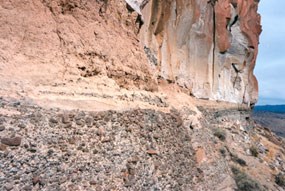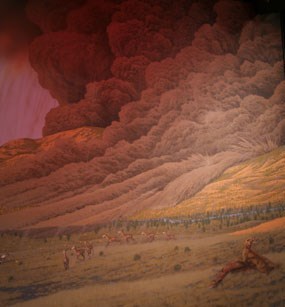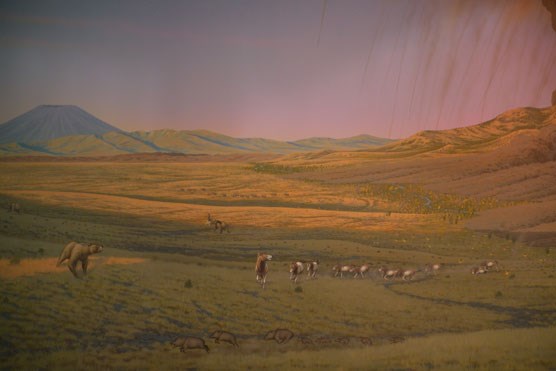
The John Day Fossil Beds record of ancient life ends with pebbles, boulders, and sand intermingled with deep soils, and a thick welded tuff. During the Rattlesnake, rivers chewed into the soft paleosols of the underlying Mascall.
Water coursed through floodplains, leaving gravelly deposits, redistributing ancient soils, and moving the remains of some of the animals that lived there. Seven million years ago, life during the Rattlesnake was interrupted by a dramatic volcanic event that formed the Rattlesnake Ash Flow Tuff. This massive eruption of superheated gases and ash sped overland and engulfed 13,000 square miles. After the horrific effects of this violent event, the Rattlesnake landscape continued to be shaped by rivers that cut through newly formed floodplains, leaving conglomerates and paleosols in their wake. Following the Rattlesnake Ash Flow Tuff the area was again dominated by shrubs and grasses growing in a semi-arid climate. Forests grew around lakes and rivers, and at the higher elevations.

Grazers such as many extinct species of horses, elephants, rhinos, camels, pronghorns, and deer flourished in this prairie environment. They were joined by other common animals such as relatives of peccaries, dogs, short-faced bears, giant ground sloths, and true cats. 
|
Last updated: January 3, 2018
